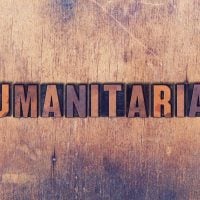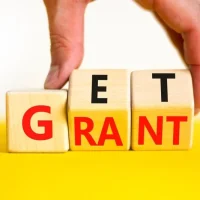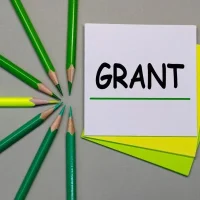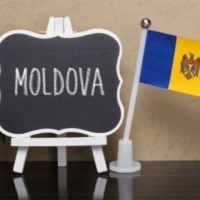Deadline: 17-Jan-25
The National Estuary Program Watersheds Grant Program is a nationally competitive grants program designed to support projects that address urgent, emerging, and challenging issues threatening the well-being of estuaries within the 28 NEP boundary areas.
Goals
- The goals of the WG Program are to:
- Implement Priority Actions identified in one of the 28 EPA-approved NEP Comprehensive Conservation and Management Plans (CCMP);
- Execute and demonstrate on-the-ground and tangible quantifiable improvements to conditions of estuarine waters and the health of habitats and living resources completely within one or more of the 28 NEP areas;
- Provide results of monitoring and assessment that generate new understanding of systems under stress in one or more of the 28 NEP areas and lead to additional improvements on the ground or in the estuary;
- Achieve advances in new approaches, practices, methods, or techniques such as nature-based solutions and green infrastructure for preventing and addressing threats to estuaries and their habitats, especially adapting and bolstering resilience to the impacts of climate change in NEP areas;
- Establish or improve sustainable local capacity, particularly in disadvantaged or underserved communities, to prevent and address urgent, emerging, and challenging issues that affect the NEP areas;
- Build partnerships with a diversity of stakeholders on project teams that address urgent, emerging, and challenging environmental issues within the NEP areas.
Focus Areas
- This grant program funds projects within the 28 NEP areas that address the following urgent and challenging issues:
- Loss of key habitats resulting in significant impacts on fisheries and water quality such as seagrass, mangroves, tidal and freshwater wetlands, forested wetlands, kelp beds, shellfish beds, and coral reefs;
- Coastal resilience and extreme weather events including flooding and coastal erosion related to sea level rise, changing precipitation, warmer waters, or salt marsh, seagrass, or wetland degradation or loss and accelerated land loss;
- Impacts of nutrients and warmer water temperatures on aquatic life and ecosystems, including low dissolved oxygen conditions in estuarine waters;
- Stormwater runoff which not only can erode stream banks but can carry nutrients, sediment, and trash into rivers and streams that flow into estuaries;
- Recurring harmful algae blooms;
- Unusual or unexplained marine mammal mortalities; and
- Proliferation or invasion of species that limit recreational uses, threaten wastewater systems, or cause other ecosystem damage.
Funding Information
- Awards will range from $200,000-500,000 and will be completed within a four year period.
Uses of the Funds
- NEP WG funding may be used for most project costs, including salary, fringe, contractual support, equipment, supplies, project-related travel, and indirect costs.
Ineligible Activities
- Certain types of projects and efforts will not be considered under this program. Research activities and studies are not eligible for funding.
- Standalone education and outreach efforts are not eligible for funding. Education and outreach may be eligible as part of a larger on-the-ground implementation project.
- Every project must clearly define and explain what outputs and outcomes will occur as a result of the project.
Expected Outcomes
- Examples of anticipated environmental outputs may include, but are not limited to, the following:
- New partnerships are formed or existing partnerships strengthened that contribute to the ecological and economic well-being within one or more of the 28 NEP areas;
- Develop new approaches, practices, or methods for preventing and addressing threats to estuaries or improving conditions;
- Extent of habitat created, re-established, rehabilitated, or enhanced using metrics such as, but not limited to, acres and/or linear feet;
- Pollutant load reductions to estuarine waters using metrics such as, but not limited to, pounds of sediment, nitrogen, and/or floatable debris removed or avoided.
Eligibility Criteria
- Eligible applicants under this announcement include state, interstate, tribal, inter-tribal consortia and regional water pollution control agencies and entities, state coastal zone management agencies, and other public or non-profit private agencies, institutions, and organizations. Eligible public agencies include state, county, and local governments. Academic institutions and NEPS are also eligible. Nonprofit organizations must be able to demonstrate their non-profit status.
- Federal agencies, for-profit corporations, and private individuals are not eligible applicants, but may be included as partners or team members in proposals submitted by eligible recipients. Public-private partnerships are encouraged, consistent with the competitive procurement requirements. For-profit partners, including consultants, who will receive grant funding must be selected in compliance with the competitive procurement requirements.
Application Requirements
- General information
- Applicant organization name and address;
- Point of contact name, email address, and phone number;
- Project lead name and contact information, if different from LOI point of contact;
- Applicant organization System Award Management (SAM) registration status and current expiration date;
- Applicant organization Unique Entity ID (UEI) – the UEI will be automatically generated as part of developing or maintaining a SAM account;
- Applicant organization EIN;
- Name of project;
- Project abstract (50 word maximum);
- Location of project: state, city, zip code, and street address (if applicable) and name of water body (if applicable);
- Project cost: total amount of WG funds requested, total amount of non-federal matching funds (or waiver for non-federal match).
For more information, visit Restore America’s Estuaries.









































